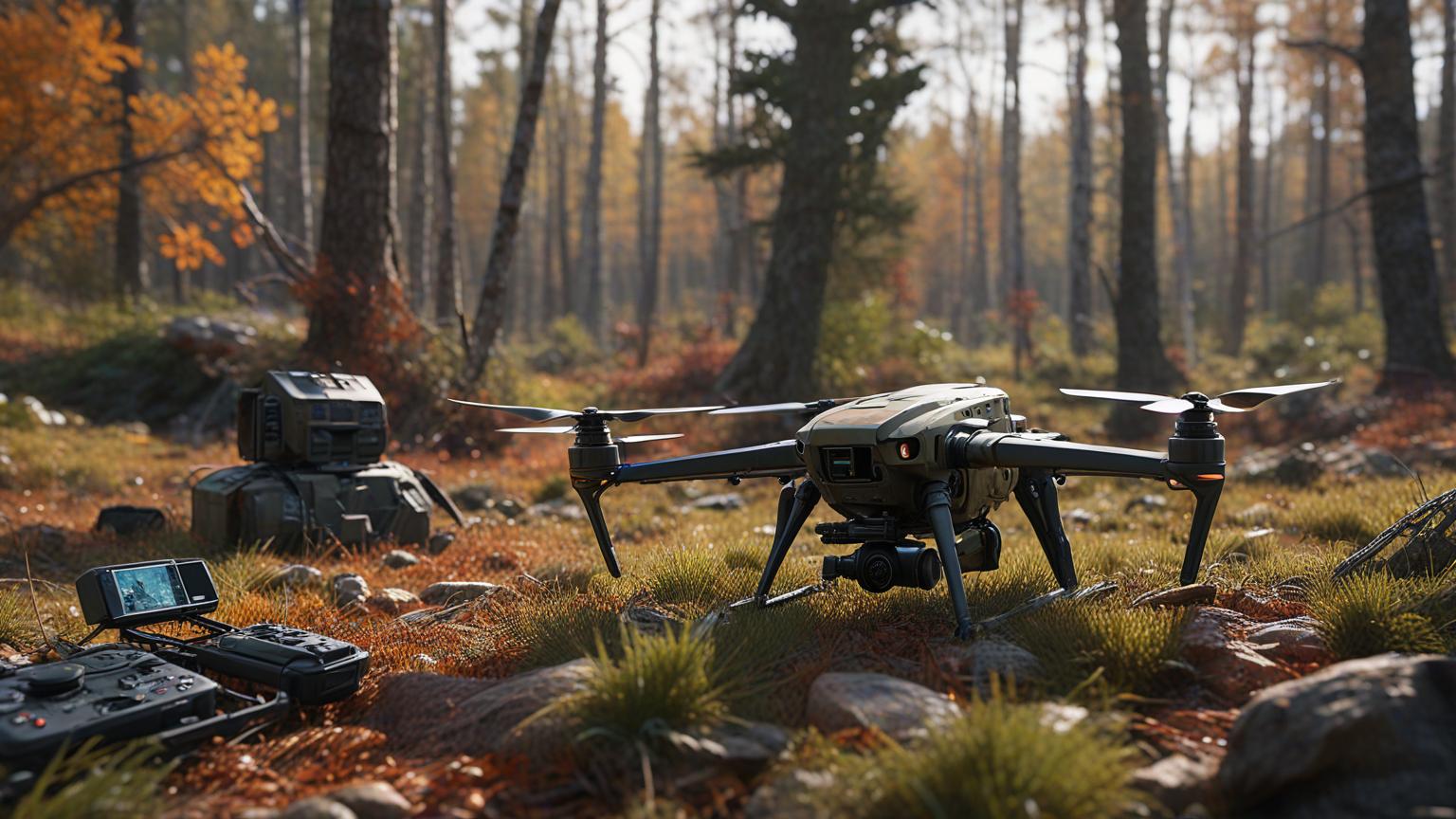Duck hunting in Arkansas has a rich tradition, especially with its expansive wetlands and diverse habitats attracting waterfowl every season. While hunting from blinds remains a tried-and-true method, the rise of high-tech gear is revolutionizing how hunters approach the sport. From drones and advanced decoys to thermal optics and mobile apps, technology is enhancing hunting strategies and improving success rates. Let’s explore the cutting-edge hunting methods now available to Arkansas hunters, moving beyond the blind to take full advantage of these innovations.
1. Drones for Scouting and Monitoring
Drones are becoming a valuable tool for duck hunters, especially for scouting and tracking waterfowl movement over large areas. With the ability to fly above marshes, rivers, and fields, drones offer real-time aerial views that are perfect for finding the best hunting spots.
- Scouting Remote Areas: Drones equipped with high-definition cameras can help locate waterfowl in hard-to-reach areas without disturbing the environment. They allow hunters to spot duck flocks, water patterns, and the most active zones, all from the comfort of their homes or vehicles.
- Real-Time Data: Many drones come with thermal imaging capabilities, allowing hunters to detect waterfowl even during low light conditions such as early mornings or foggy afternoons. This high-tech scouting method provides critical insights into bird activity without ever setting foot in the field.
2. Smart Decoys and Motion Technology
Decoys have long been an essential part of duck hunting, but today’s high-tech models take them to the next level. Smart decoys and motion-activated technology have revolutionized how hunters attract ducks, creating more lifelike presentations that draw in birds more effectively.
- Motion-Activated Decoys: Modern duck decoys are equipped with motors that create realistic movement, mimicking the natural feeding or swimming motions of real ducks. These motion decoys can be particularly effective in windless conditions when traditional, static decoys might fail to attract attention.
- Bluetooth-Controlled Decoys: Some high-end decoys now offer Bluetooth technology, allowing hunters to control movement from a distance with their smartphones. This control over the decoys allows for precise adjustments based on weather conditions, duck behavior, or hunting location.
3. Thermal and Night Vision Optics
For hunters aiming to extend their hours or enhance their vision, thermal and night vision optics provide invaluable advantages. While traditional duck hunting is limited to daylight hours, these high-tech tools allow hunters to stay in the field during low-light conditions, opening up the opportunity for late-evening or early-morning hunts.
- Thermal Imaging: Thermal optics allow hunters to spot waterfowl even in total darkness or foggy conditions. Thermal sights detect the heat emitted by warm-blooded animals, allowing hunters to see ducks clearly against cold backgrounds such as ponds, rivers, and marshes.
- Night Vision Scopes: Night vision scopes enhance visibility under low-light conditions, enabling hunters to track the movement of ducks when daylight fades. This gives hunters more flexibility, as they can identify potential targets without needing to wait for full light.
4. Mobile Apps for Weather and Migration Tracking
Weather and migration patterns play a huge role in duck hunting success. With the help of mobile apps, hunters in Arkansas can now monitor real-time weather conditions, barometric pressure, and migration patterns to optimize their hunting efforts.
- Weather Apps: By utilizing weather apps that track temperature, wind speed, and rain patterns, hunters can plan their hunts based on ideal conditions for waterfowl activity. Mobile apps can also notify users of incoming cold fronts or storm systems, which are known to trigger duck migrations.
- Migration and Tracking Apps: Some specialized hunting apps offer migration maps, providing real-time data on the movements of waterfowl across the region. By tracking flocks and understanding where ducks are heading, hunters can stay ahead of the game and set up in prime locations.
5. GPS and Mapping Systems
GPS technology has dramatically changed the way hunters navigate hunting locations and manage their hunts. Advanced mapping systems, including handheld GPS devices and mobile apps, provide hunters with precise coordinates for locating hunting spots and tracking movement.
- Precise Location Tracking: By using GPS-enabled devices, hunters can map out the most productive areas, including key feeding zones, water sources, and duck flyways. This ensures they don’t waste time on unproductive areas and focus their efforts on the best locations.
- Navigating Marshes and Wetlands: Arkansas’ wetlands can be tricky to navigate, especially during early morning hunts. GPS technology helps hunters plot routes through unfamiliar terrain, marking safe passageways and helping them avoid potential hazards like deep water or dense vegetation.
6. Portable Solar Chargers and Power Banks
In the age of high-tech gear, staying powered up is crucial. Whether you’re using a drone for scouting, mobile apps for weather tracking, or motion-activated decoys, having a reliable power source is essential to avoid interruptions during your hunt.
- Solar Power Banks: Portable solar chargers provide a sustainable way to keep your devices powered throughout the day. These lightweight, compact units can easily be stashed in a hunting bag, ensuring you never run out of battery power while in the field.
- USB Charging Systems for Gadgets: Many hunters are now using USB-powered devices such as cameras, GPS units, and Bluetooth decoys. With the right power bank, you can ensure that your gear remains charged without needing to return to camp for recharging.
Conclusion
The introduction of high-tech gear has taken duck hunting in Arkansas to new heights, allowing hunters to move beyond traditional methods and adapt to the ever-changing landscape. From drones for scouting to thermal optics and smart decoys, these tools provide enhanced precision, efficiency, and success rates for modern hunters. By integrating these innovative technologies into your hunting strategy, you can gain a competitive edge and elevate your experience in the Arkansas wetlands, all while maintaining the thrill and tradition of the hunt.

